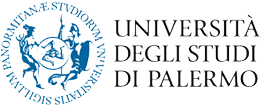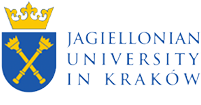The Siete Partidas: A Case of Vernacular Legislation in the 13th Century
This chapter analyzes the Siete Partidas, the comprehensive legal code issued under Alfonso X of Castile in the 13th century. The chapter explores its origins, structure, influences, and historical legacy, highlighting its importance in medieval legal culture and its role in shaping Hispanic jurisprudence.
Les origines des Siete Partidas (The Origins of the Siete Partidas)
The Siete Partidas were written during the reign of Alfonso X of Castile (1252–1284), as part of his broader political and cultural vision. Alfonso sought to consolidate legal authority by unifying diverse legal traditions within his kingdom under a single legal framework. The Partidas built upon existing Castilian laws, Roman law, and canon law, incorporating philosophical principles from Aristotle and theological influences from the Christian tradition. This synthesis reflects Alfonso’s ambition to create a universal legal and moral code for his kingdom.
La structure et le contenu des Siete Partidas (The Structure and Content of the Siete Partidas)
The Siete Partidas are divided into seven parts (partidas), each addressing a specific aspect of law and society:
- Partida I: Focuses on ecclesiastical law, the relationship between Church and State, and the role of religious institutions.
- Partida II: Addresses royal authority, governance, and the duties of kings and officials, emphasizing the philosophical justification of monarchy.
- Partida III: Covers procedural law and the functioning of judicial systems, including rules for trials and legal disputes.
- Partida IV: Regulates family law, marriage, inheritance, and kinship relations.
- Partida V: Concerns property rights, contracts, and economic transactions, including rules on trade and commerce.
- Partida VI: Focuses on criminal law and the punishments for offenses, balancing retribution with justice.
- Partida VII: Deals with laws of war, chivalry, and military obligations, reflecting the importance of knights and military service in medieval society.
Each partida is organized systematically, providing clarity and coherence to a wide range of legal topics. The text combines normative legal rules with moral and philosophical justifications, emphasizing the importance of justice and equity in governance.
La diffusion et la réception des Siete Partidas (The Dissemination and Reception of the Siete Partidas)
Initially, the Siete Partidas did not gain widespread acceptance due to resistance from local legal traditions and customary laws. However, their formal adoption in the Ordenamiento de Alcalá (1348) marked a turning point, establishing them as a cornerstone of Castilian law. The Partidas were widely disseminated throughout the Iberian Peninsula and, later, in the Spanish colonies, where they influenced legal systems in the Americas.
The text’s adaptability allowed it to coexist with regional statutes and customary practices, while its philosophical and theological underpinnings ensured its enduring authority.
L’importance des Siete Partidas pour l’histoire juridique (The Importance of the Siete Partidas in Legal History)
The Siete Partidas occupy a central place in the history of medieval and modern law:
- Legal Heritage: They integrated Roman, canon, and customary law into a unified system, creating a comprehensive legal framework.
- Theoretical Contributions: The text’s systematic structure and moral foundations provided a model for later codifications in Europe and Latin America.
- Global Influence: As part of Spanish colonial law, the Siete Partidas shaped the development of legal systems in Hispanic America, where they remained influential until the 19th century.
The chapter underscores the Siete Partidas as not only a legal text but also a cultural artifact, reflecting Alfonso X’s vision of law as an instrument for moral and social order.
Conclusion
The Siete Partidas represent a landmark achievement in medieval legal history, combining law, philosophy, and theology into a unified and systematic legal code. Despite initial resistance, their legacy endured through their incorporation into Castilian law and their influence on legal systems in the Spanish-speaking world. This text exemplifies Alfonso X’s ambition to harmonize governance with justice, reflecting both the cultural aspirations and legal innovations of 13th-century Castile.






